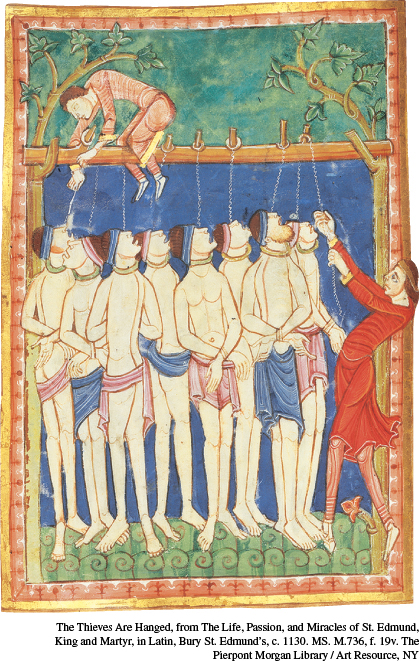
Hanging Thieves
The development of common law in England meant mobilizing royal agents to bring charges and arrest people throughout the land. In 1124, the royal justice Ralph Basset hanged forty-four thieves. It could not have been very shocking in that context to see, in this miniature from around 1130, eight thieves hanged for breaking into the shrine of St. Edmund. Under Henry II, all cases of murder, arson, and rape were considered crimes against the king himself. The result was not just the enhancement of the king’s power but also new definitions of crime, more thorough policing, and more systematic punishments. Even so, hanging was probably no more frequent than it had been before. (The Thieves Are Hanged, from The Life, Passion, and Miracles of St. Edmund, King and Martyr, in Latin, Bury St. Edmund’s, c. 1130. MS. M.736, f. 19v. The Pierpont Morgan Library / Art Resource, NY.)